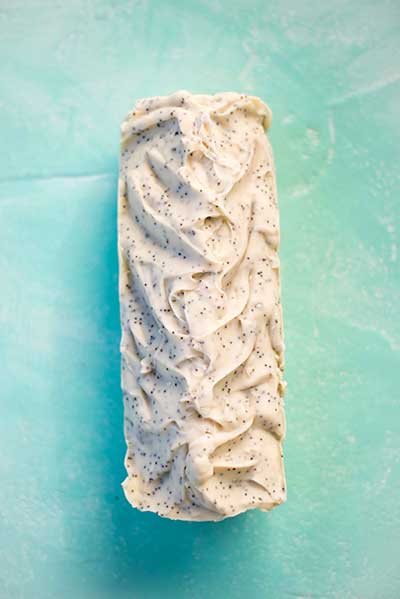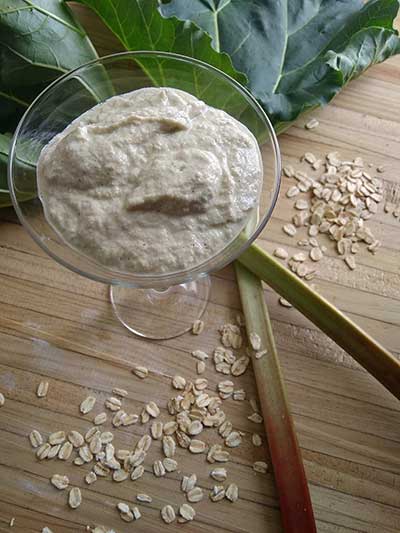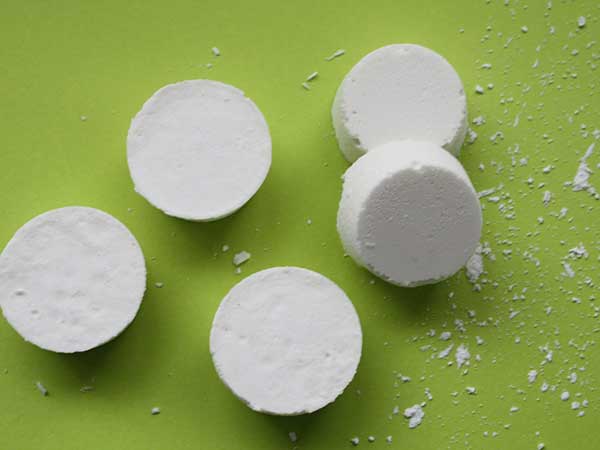Natural skin care recipes you can make at home
Why not do it yourself! You just need a little know-how and some inspiration and the Web has it all. You can always get some books out of the library for some recipes with a step by step guide. Natural beauty recipes should be like baking recipes, find a good one, and pass it down the generations.
Obviously we want to sell our products to you, but just as much we want people to do it for themselves and save a whole lot of money at the same time. For Hayley being a young mum of three, she knows what it’s like to ‘scrimp’ on dollars so we thought we’d include a few recipes for you to try yourself. Mix it up and make the recipes your own, get experimenting, it’s half the fun!
For any of the ingredients that you don’t already have in your cupboard or garden, you should be able to source over the net. If you are in New Zealand go to the Lotus Oils, Pure Nature or Go Native pages and you should find what you need at a reasonable price! Bin Inn is great for its bulk ingredients as well. Health food shops and specialty shops are generally overpriced, so take the time to hunt around.
Please click the links below for recipes to try!
OR just click back over to our shop to buy some already made goodies
Poppymint Tingle Soap
Big thank you to David Press (aka super-smart Chemistry Specialist) for giving his own natural cold-pressed soap recipe to share – also thank you to Bin Inn Waitara! They supply all ingredients to make this, and lastly to Theresa in New Plymouth for writing out David’s instructions from his soap making lesson! Ok, let’s go…
You will need:
462g Olive Oil
198g Coconut Oil
20g Beeswax – grated
97g Caustic Soda / Lye / Sodium Hydroxide (buy online from purenature.co.nz)
208g Purified / filtered Water
20g Essential Oil of choice
A soap mould of choice! Springform cake tins will do or anything really!
A candy thermometer
plastic gloves and ideally glasses as well
PLEASE read through these instructions carefully a couple of times to get familiar before you start! Be exact with measurements as this is science folks! Just like baking a bit of this and a bit of that just won’t work.
To make:
1 – Line your soap mould with greaseproof paper (If using a wooden mould, ensure the wood is as thick as possible. For plastic moulds – oil before pouring in soap and put in the freezer for 1 hour when removing soap, no problems with silicone moulds (For a long time I just used my bread loaf tins – but recently just brought a silicone one from gonative.co.nz).
2 – Weigh the olive oil into a stainless steel bowl (do not use aluminium)
3 – Weigh the solid coconut oil into the bowl with the olive oil
4 – Next add the grated beeswax
5 – Heat the oils & Beeswax in a double boiler on the stove (not directly on stove element) – stir occasionally and heat until the beeswax is all dissolved and the mixture is clear
6 – Keep the temp below 72 degrees Celcius
Meanwhile, measure out separately the exact quantities of caustic soda and water (always use protective gloves and glasses when handling caustic soda. This is a chemical which reacts with the oils to make the soap, so make sure measurement is correct)
Note. Ensure water is purified and cold. NZ tap water is okay however spring water, which has added elements is not suitable. Rainwater is okay as long as no animal excrement in it. Try boiled carrot or beetroot water for colour, make sure it is cold before using.
7 – In a small container measure out required quantities of essential oil – you could also add orange peel to make it exfoliating (optional) – you can do this by; drying the peel, grinding dried peel (use a coffee grinder to do this) then sift the granules to get a fine powder. Add to the oil.
8 – Check the oil mixture on the stove and when it is clear take it off the heat and cool to about 40 degrees Celcius – stir occasionally so the oil does not crystallise.
9 – Add the caustic soda to the water and stir until clear and temperature is down to about 30 degrees Celcius or below. This mixture is known as lye solution.
NEVER add the water into the caustic soda as the mixture will heat up and scatter everywhere ALWAYS add the caustic soda to the water.
You can use a glass bowl here but if cooling by ice, transfer to a stainless steel bowl.
When adding the caustic soda to the water the mixture will heat up. Cooling of the solution and the oils can be speed-ed up by putting the bowls into ice.
For lye solution the cooler the better.
Now – When the oils reach about 40 degrees and the lye solution is about 30 degrees you are ready to MAKE THE SOAP!
10 – Add the lye solution to oils (not the essential oils) and stir continuously. The temp of the mixture will rise. Use an electric beater or stick blender to speed up the process. When the mixture gets to almost the ‘trace’ stage mix in the essential oils etc. and continue mixing until ‘trace’ is reached.
(To test for ‘trace’, dip a spatula or spoon into the mixture and dribble a bit of it back into the pot. If it leaves a rise or mound of soap which takes a couple of seconds to disappear then you have reached trace – very similar to making a pavlova).
11 – Now quickly put the mixture into your mould – mixture at approx 30 degrees temp.
Wrap the mould in bubble wrap or tea towels and keep it warm for about three days. If you have a hot water cupboard, put the mould in there to keep warm.
12 – After three days take the soap out of the hot water cupboard, remove from the mould and take off the greaseproof paper if using. Then you can cut it up into your desired size!
Now you have to store the soap for about a month. The soap will continue to react and go hard during this time. After a month your soap is ready to be used. You can wrap it in greaseproof paper to make a nice presentation. Soap can continue to be stored in a hot water cupboard if you wish.
– when using the soap ensure it rests in a dish with holes to drain off the water as the soap should not be left wet.
There are many websites on the net which show you how to make soap including www.soapcalc.net.
Ok, it seems like it could be dicey to make with all these exacts this and careful that…but really like anything once you get going, take your time and you’ll be fine. Let us know how you go!
Farmlands can supply caustic soda if you cannot find it in your local bin inn. Or you should be able to find it in a hardware store 🙂
This makes high quality and beautiful natural soap that is safe for the whole family!
HAVE FUN!


Rhubarb & Oatmeal Face Mask
Or you could even go so far as to call this a ‘vitamin C – lactic acid – soothing live culture face mask’. Sounds a bit fancier doesn’t it – but let’s get real – all-natural homemade on the spot masks are just as effective or even more than ones you buy in the shop. (apart from ours – all dry ingredients that you mix with water at home, yay) Minus the preservatives – minus the packaging and plastic – and full of active goodness that you will love!
So! Rhubarb! yes – how did this come about you ask? Well….when I look in the garden I see food first, and then I think “is this good on my skin”- more often yes than no but a bit of research has to go into it. I wouldn’t want to just put any old thing on my face, it HAS to do something to my skin or what’s the point.
Let’s break it down.
Rhubarb – nice natural source of vitamin C (which has become a very sought after ingredient in skincare due to its amazingness for our skin BUT because oxygen and light both oxidise it so quickly you will be hard-pressed to find it in a quality skin care product for an affordable price. SO GO HOME MADE! way cheaper and its in its natural form.
Yoghurt with live cultures – again come 2017/2018 it’s been a very sought after ingredient to get in skincare – probiotics and live cultures are so great for your inside but let’s not forget the skin! You have your own microorganisms on your skin (also known as skin flora) keeping things clean and healthy. So actually applying good bacteria straight on will do your skin wonders. Good guys helping out good guys. AND yoghurt has a natural form of lactic acid which oh so gently exfoliates your skin on contact without harsh scrubbing. Yes!
Rolled Oats – Soothing and calming. (also great to put in the bath for skin irritations).
Let’s get making – this is actually the easy part, the research takes longer ha – saving you all the work!
70g Rhubarb
50g plain unsweetened yoghurt with live cultures
20g Rolled Oats
Blend everything together (we use one of those milkshake bullet machines because it’s easy and cleans easy). You really want to blend it down so there are no chunks or big grains of oats.
Done! Apply to your face – have fun. It’s a lil messy but oh so nice. You could add some fresh herbs like peppermint if you like! Leave for 10 min – relax. Then wash off.
ALWAYS follow a mask with a nice oil or moisturiser. (Golden Dew Drops is amazing after this treatment – you can find the link on the side of this page)
Makes enough for 3-4 masks. If you don’t have anyone to share with then store in the fridge and use the next day. But that’s it! Do not leave it sitting around for longer – or try bottling it and selling or giving it away – it’ll go off and harbour bacteria.
skin allergies/advice. If you are allergic to any of these ingredients, be wise and don’t make it. If you are sensitively skinned – do a skin patch test. put a little bit of mask on the inside of your wrist and wait 10 min to see if any reaction occurs. With any product be safe, not sorry ok!


Cold & Flu Shower Pucks
Initially, I had this recipe up here on my website when I first started my business. A customer reached out and said she made it and she was still needing help – Love that! – you ask and I am here to tweak until you are happy!
So after weeks of playing with slight variations of mixes of the recipe -this is the baby that I am happy with and use within our family through winter. So simple my 4 years old made a batch AND my sons whole intermediate class made some too. You can imagine the chaos lol.
Makes enough to fill one silicone mould of 9 muffin-sized holes
OR – 3 silicone trays – ice cube sized
Ingredients:
1 ½ cups (440g) Baking Soda
½ cup (90g) Corn Flour
7 Tbsp (128g) Water
Oil blend of choice
Essential oil blend 1:
20 drops each of Peppermint (Mentha Piperita)
20 drops Eucalyptus Blue Gum (Eucalyptus Globulus)
20 drops Lavender (Lavandula Angustifolia)
Essential oil blend 2:
10 drops Hyssop (Hyssopus officinalis)
10 drops Peppermint (Mentha Piperita)
20 drops Tea Tree (Melaleuca Alternifolia)
20 drops Lavender (Lavandula Angustifolia)
To make:
- Measure your baking soda and sieve into a bowl
- Measure your cornflour and sieve into the same bowl
- Add in 1Tbsp water at a time into dry mixture – mixing as you go till you are at 7Tbsp or less, depending on how the mixture feels.
- You want the mixture to become like wet sand. You do not want to add too much water or it will turn into gloop.
- If this happens it’s ok – it will just take 1 or 2 days longer to dry your pucks.
- Add in your essential oils and mix up with a fork.
- Spoon into your silicone moulds and press down
- You are finished!
- Sit your filled silicone moulds to dry for 1-2 days. The smaller the puck the faster it will dry.
- Once dry – push them out and they are ready to use
- Store in an airtight jar and use within 6 months for ultimate essential oil freshness
To Use:
Turn on your shower and close the door – do not turn on a fan if you have one. Let the room steam up and then you add your puck to the shower floor. If you made small ones you may need 3 to have an impact. Hop in the shower and breathe in the essential oil filled the air. Make sure to open a door if you become overwhelmed with the steam at any stage.
Essential oil safety – DO NOT put oil straight on the skin – DO NOT swallow the oil. Please treat essential oils as you would a prescription medicine from a doctor. If you swallow any oil please call the Poison hotline.
Contraindications of oils used today: Peppermint Oil – do not use if pregnant, avoid with a bad heart or circulatory problems – warfarin or pacemakers. Hyssop oil – do not use if under 7 years old or have epilepsy/ pregnant or have high blood pressure- short term use only.




